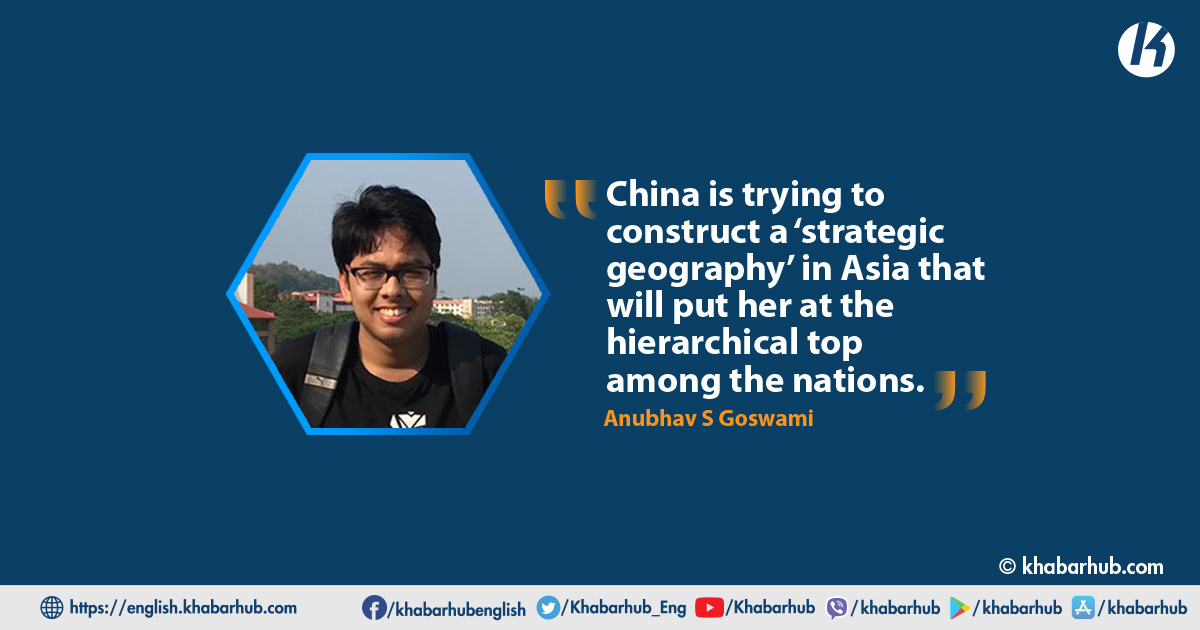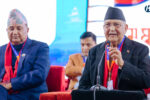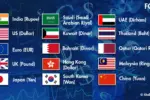China’s rise has been the biggest geopolitical disruption the world has seen since the end of the cold war between the United States and the Soviet Union.
Not only is she changing the rules of the global economic order, but China is also trying to construct a ‘strategic geography’ in Asia that will put her at the hierarchical top among the nations.
This strategic geography has no room for the United States’ presence in Asia, as Beijing has set a mission for itself to push the Americans out of Asia in order to rewind the clock back to a time when its neighbors paid obeisance to the Qing monarchy and Europeans were treated as ‘barbarians’ at Qing courts.
Modern-day Qings at the Chinese Communist Party hopes that the future of China becomes its past while its neighbors resume their traditional role of paying tributes as vassals.
Of course, the biggest thorn in their dream is the stabilizing role of American presence in Asia, particularly Northeast and Southeast Asia.
Earlier assumptions of the shared destiny of China and America in Asia are increasingly reaching their expiry date now.
From threatening to “pluck out eyes” (The Guardian, 2020) to “bashing heads to the wall” (BBC News, 2021), Beijing has amply made it clear that the preservation of Chinese interests in Asia is a zero-sum game for them.
If only America had read Kautilya’s shadgunyam, Kissinger wouldn’t have probably made the secret trip to China in 1971 or future Reaganites wouldn’t have co-opted the CCP in the liberal international order in the false hope of democratizing their ‘illiberal regime’.
How can reading an Indic scholar’s work explain the CCP’s foreign policy over the years and its future course? To come to that, first, it is imperative to understand what Kautilya’s shadgunyam are.
Chinese point of view of war is not linear but multi-dimensional and multi-domain which is why it holds the belief that annexing Taiwan or converting the South China Sea into a Chinese lack or for that matter, hacking/stealing industrial secrets are also strategic victories against the United States.
Shadgunyam’s are a set of six-policy instruments of statecraft formulated by ancient Indian realist Kautilya for adoption by a ‘righteous king’ to achieve its aim of world conquest (Vijigishu).
The six principles are Sandhi, Vigraha, Asana, Yana, Sansraya and Dvaidhibhava. Sandhi or making peace refers to diplomatic outreach which a Vijigishu resorts to when its kingdom is weak.
The king makes peace with a more powerful kingdom to buy time in order to strengthen the offense-defense capabilities of the kingdom.
Vigraha is the policy of hostility that puts the Vijigishu in an offensive posture. With the right circumstances, hostility is escalated to yana (war) includes both overt and covert war. Kautilya is very particular about the utilization of covert and overt war.
He advises the Vijigishu to engage in combat only when it is sufficiently powerful against its enemy. If the Vijigishu is relatively weak, it is to employ covert or silent warfare.
After a period of restraint, whereby the Vijigishu is now sufficiently capable of conquering its enemy, it finally breaks sandhi and marches for the expedition. Restraint or Asana is an important method of statecraft. Prudent and moderate behavior in foreign policy is considered dharmic and moral.
Here Kautilya’s mind matches with the thoughts of modern classical realists like Hans Morgenthau who said that “interest (national) defined outside of the language of justice is irrational and self-defeating.”
Where they depart from each is over Kautilya’s declaration that moral postures must also fulfill unstated interests/objectives of the Vijigishu.
Classical Indian Political Thought also gives credible importance to alliance building. Samsray or seeking shelter from a powerful ally is imperative for the Vijigishu when it is in a weak state and the enemy is knocking at its doors.
However, a Vijigishu must never be satisfied with its role as a junior ally in an alliance, lest it wants to become a lackey and an eventual vassal to its powerful ally.
To maintain its strategic autonomy, a Vijigishu must use the policy of Dvaidhibhava or duplicity to swing the alliance in its favor in the future by silently undermining the powerful ally to eventually conquer it entirely.
China’s regional as well as global patterns of behavior find profound similarities to what Kautilya was prescribing to his Vijigishu.
Chinese foreign policy has passed through several phases since the establishment of the People’s Republic of China (PRC) in 1949 in which shades of shadgunyam are present in all its phases.
When it came out of the shadows of imperialism and civil war, PRC was weak and had to samsraya (alliance) under the Soviet tent to ward off the Americans.
At the same time, Mao’s China was no lackey to Stalin and later, Khrushchev’s USSR. Beijing went ahead with its nuclear program to find its own feat in order to defend itself from America as well as undermine the Soviet stamp in the communist world. If the Soviets had read Dvaidhibhava (duplicity), they could have anticipated China’s nuclear program!
Once the PRC was nuclear-armed in 1964, it became openly hostile (Vigraha or offensive posture) to the Soviets which finally culminated into the Sino-Soviet conflict of 1969 (yana).
To prove itself as a benign-inward-looking power, it settled all its land border disputes with its neighbor except India. Its restraining behavior impressed the West who believed co-opting illiberal Beijing into the liberal world order will bring domestic reforms to China’s politics.
Fifty years later, PRC has a new enemy – America. But Chinese undermining of the USA has largely been covert. This is consistent with shadgunyam as Vigraha leads to two kinds of Yana or war – overt and covert.
According to Grant Newsham of the Center for Security Policy, while Americans think they are in a ‘strategic competition’ with China, Beijing believes it is already in a ‘war’ with Washington.
Chinese point of view of war is not linear but multi-dimensional and multi-domain which is why it holds the belief that annexing Taiwan or converting the South China Sea into a Chinese lack or for that matter, hacking/stealing industrial secrets are also strategic victories against the United States.
But how did China amass so much power to challenge the United States in the first place? It did so by following the two-pronged strategy of Sandhi and Asana.
First, PRC made peace with America in the 1970s (starting with Kissinger’s visit) and then disengaged itself from the larger geopolitical conflicts of Asia from 1979 onwards to focus solely on development through market-driven reforms.
To prove itself as a benign-inward-looking power, it settled all its land border disputes with its neighbor except India. Its restraining behavior impressed the West who believed co-opting illiberal Beijing into the liberal world order will bring domestic reforms to China’s politics.
But China was only ‘buying’ time through Sandhi and Asana to sufficiently increase its gross national power to take on its adversaries.
Thus, shadgunyam’s relevance to modern-day statecraft is credibly apparent. China’s rise has brought the world back to the era of great power competition.
What Beijing says and does in its external affairs has always been a game of deceit. Kautilya’s shadgunyam may just help the world see through China’s duplicity.
(Anubhav S Goswami is a Doctoral Scholar at Jindal School of International Affairs, O.P Jindal Global University)









Comment